The Northern Blue Tongued Skink (T. scincoides intermedia Mitchell, 1955)
(The "scincoides" species is frequently referred to as the common blue tongued skink)
Perhaps being the most practical among all blue tongued skinks, they are assumably the easiest to breed, and also to have the highest number of offspring...sometimes up to 25 (although fairly uncommon)! They are among the heaviest of the blue tongues, and are often particularly affectionate. While browsing reptile marketplaces & classifieds, you will likely not have a hard time finding a Northern which is ideal, as this is perhaps the most practical species for a pet. Apart from being gorgeous, they are easy to find, inexpensive, very friendly, easy to breed, and if you do breed, they give plenty of offspring. Maybe it's me, but don't the Northerns always seem to have a 'buffed' clean shiny head? Also, a true Northern typically has no patterning on the anterior legs, and is a sub-species of the Eastern (which also has no patterning on the anterior legs). A dead giveaway for identification of a Northern are the bright cantaloupe colored splotches on each side of the animal.
Distinguishing marks:
Clean anterior legs
Vibrant orange to cantaloupe colored splotches on each side of belly
Lacks dark temporal streaksfaded light streaks sometimes seen
Adults are very large weight/mass wise
Usually produces more offspring than other species of BTS
The Northern seems to be very docile in the states, but very aggressive in its native homeland (Australia)
Map of the Northern Blue Tongue's Territory
Further Reading Thanks to James Wilson
See Reptile Rascal's babies from this year
The Kimberley Northern




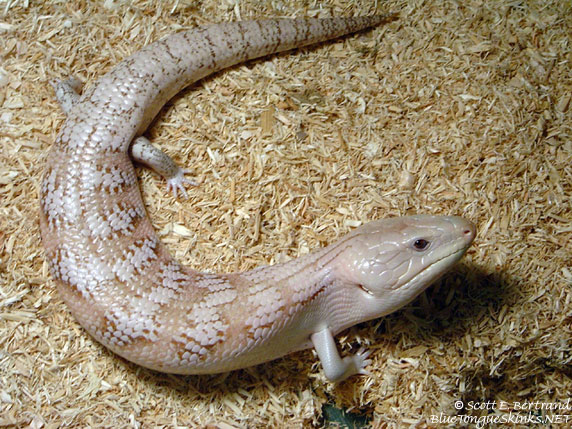
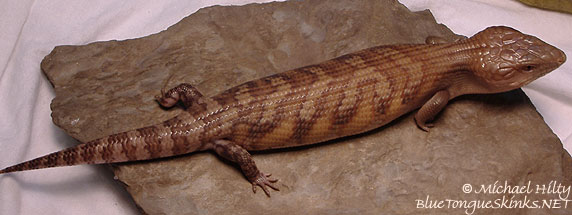


Here is a Northern with a unique triangular pattern.


Some of Andrew Seike's orange Northerns


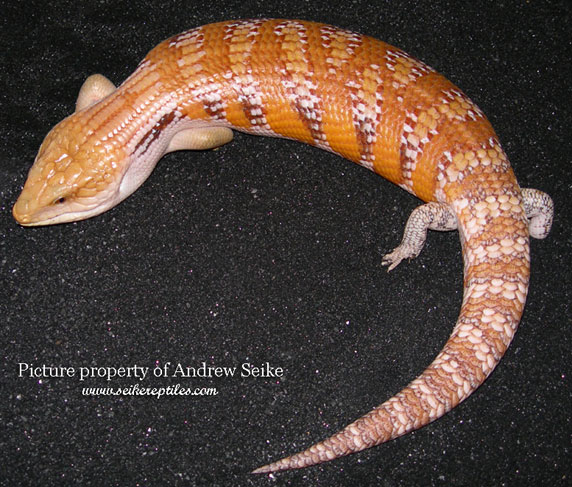
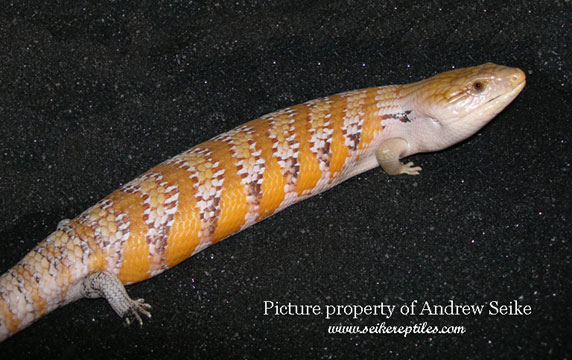
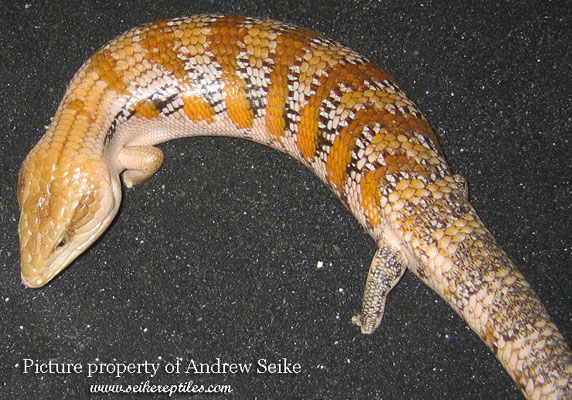
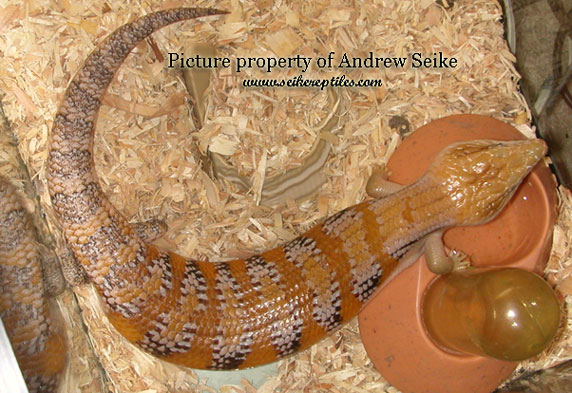
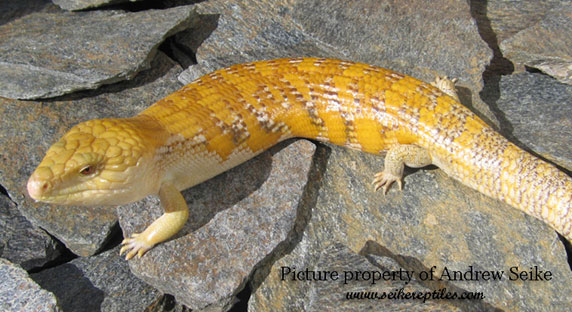
This picture shows a large, one-of-a-kind snow white Northern blue tongued skink. She is owned by our friend, Alex Bendana.

Northern babies
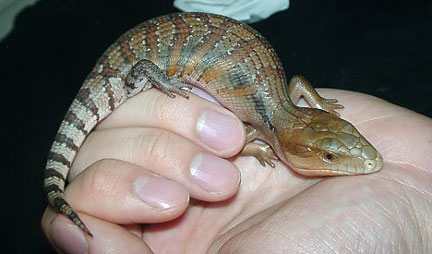

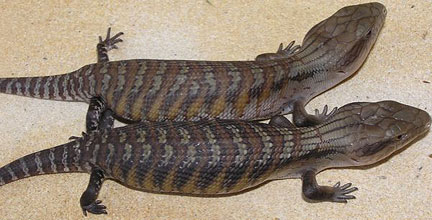
 ®
®
 ®
®